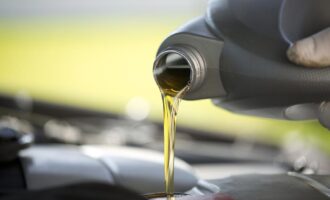
EPA issues final TSCA rule for PBT chemicals, including anti-wear additive
The U.S. Environmental Protection Agency (EPA) has released final rules under the Toxic Substances Control Act (TSCA) that will reduce exposure to five chemicals that are persistent, bioaccumulative and toxic (PBT).
PBT chemicals are of particular concern not only because they are toxic but also because they remain in the environment for long periods of time and can build up or accumulate in the body.
Included among these chemicals are phenol, isopropylated phosphate (3:1) (PIP (3:1)) and 2,4,6-tris(tert-butyl)phenol (2,4,6-TTBP).
PIP (3:1) is an anti-wear additive, or an anti-compressibility additive in hydraulic fluid, lubricating oils, lubricants and greases, various industrial coatings, adhesives, sealants, and plastic articles.
2,4,6-TTBP is an intermediate/reactant in processing, and is incorporated into formulations destined for fuel and fuel-related additives.
“By working with a wide variety of stakeholders, we were able to put in place restrictions on five PBT chemicals that will protect our families and our environment,” said EPA Office of Chemical Safety and Pollution Prevention Assistant Administrator Alexandra Dapolito Dunn.
TSCA required the U.S. EPA to take expedited action on specific PBT chemicals to address risk and reduce exposures to the extent practicable. EPA identified these five PBT chemicals for expedited action, following criteria outlined in TSCA. The final rules released on December 22, 2020 limit or prohibit the manufacture (including import), processing, and/or distribution in commerce for the following:
- Decabromodiphenyl ether (DecaBDE): A flame retardant in plastic enclosures for televisions, computers, audio and video equipment, textiles and upholstered articles, wire and cables for communication and electronic equipment, and other applications.
- Phenol, isopropylated phosphate (3:1) (PIP (3:1)): A plasticizer, a flame retardant, an anti-wear additive, or an anti-compressibility additive in hydraulic fluid, lubricating oils, lubricants and greases, various industrial coatings, adhesives, sealants, and plastic articles.
- 2,4,6-tris(tert-butyl) phenol (2,4,6-TTBP): An intermediate/reactant in processing, and is incorporated into formulations destined for fuel and fuel-related additives;
- Hexachlorobutadiene (HCBD): A chemical used as a halogenated aliphatic hydrocarbon that is produced as a byproduct during the manufacture of chlorinated hydrocarbons.
- Pentachlorothiophenol (PCTP): A chemical used to make rubber more pliable in industrial uses.
The U.S. EPA used public comments received on the proposed rules issued in June 2019 to inform these final rules. Additionally, the agency conducted extensive outreach with the public and other stakeholders in developing the final rules, including holding a webinar on chemical use information and carrying out a consultation with tribes.
A summary of the final rules and the risk management actions for each chemical can be found here.









